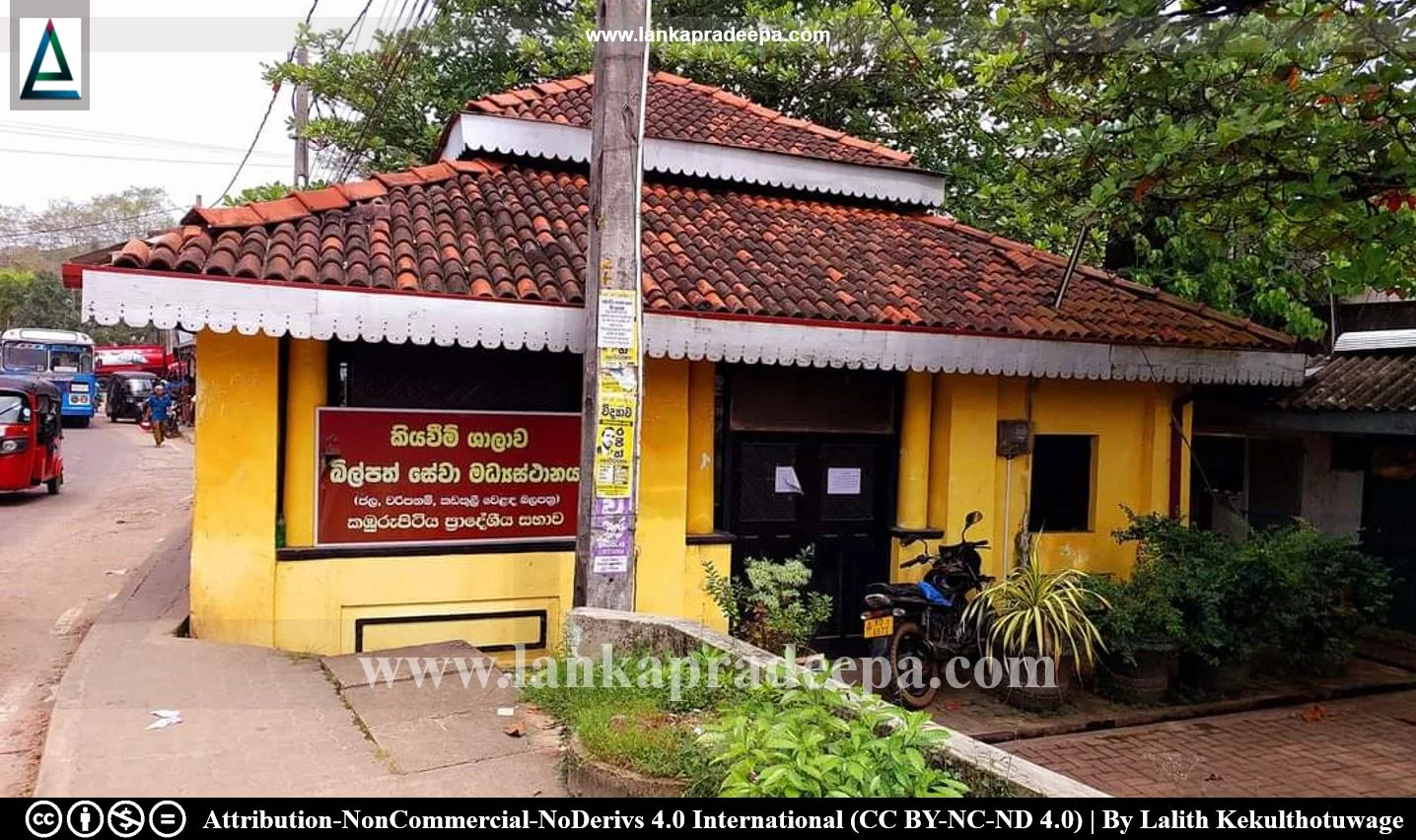
|
Kamburupitiya Ambalama |
Kamburupitiya Ambalama (Sinhala: කඹුරුපිටිය අම්බලම), is an old resting house situated at the roundabout of Kamburupitiya junction in Matara District, Sri Lanka.
History
Ambalamas are traditional resting places built by locals to provide shelter for travellers journeying to far-off destinations. They served as communal hubs for gatherings, meetings, and public interactions. During the 16th, 17th and 18th centuries, Ambalamas were spread all over the country. According to the plaque fixed onto the wall of the building, the Ambalama at Kamburupitiya junction was constructed in the Buddhist year 2453 (1909 A.D.). The Sinhala inscription on the plaque can be read as follows;
Text: කඹුරුපිටියේ ඩී. සී. විජේසිංහ ගොඩේකන්දෙ මහරාළහාමි විසින් නිවන් පතා කරවන ලදී. ශ්රී.බු. 2453.
Translation: Expecting the Nirvana, (this Ambalama was) constructed by D. C. Wijesinha Godekande Maharalahami of Kamburupitiya. 2453 B.E.
The Structure
This small Ambalama building is roughly square in shape and its roof is balanced on round and square cement pillars. Connecting these pillars, a short wall runs around the structure. The space between the short wall and the roof is filled with wooden panels that act as windows. The roof which has two decks is covered with semi-circular clay tiles (Sinhala Ulu).
A Protected Monument
The premises bounded on the north by School Mawatha; on the east by private lands; on the south by by-road; and on the west by Kamburupitiya–Deyyandara road and the ancient wayside resting place situated therein at the Kamburupitiya junction in Kamburupitiya village in the Grama Niladhari Division of Kamburupitiya in Divisional Secretary’s Division, Kamburupitiya is an archaeological protected monument, declared by a government Gazette notification published on 16 September 2023.


Related Posts
Read Also
References
Government Gazette Notifications
1) The Gazette of the Democratic Socialist Republic of Sri Lanka: Extraordinary. No: 2349/42. 16 September 2023. p.2A.
Location Map
Dynamic Google Map
Attribution
To Whom
LankaPradeepa.com extends its gratitude to Lalith Kekulthotuwage for providing the necessary photographs required for this article.

